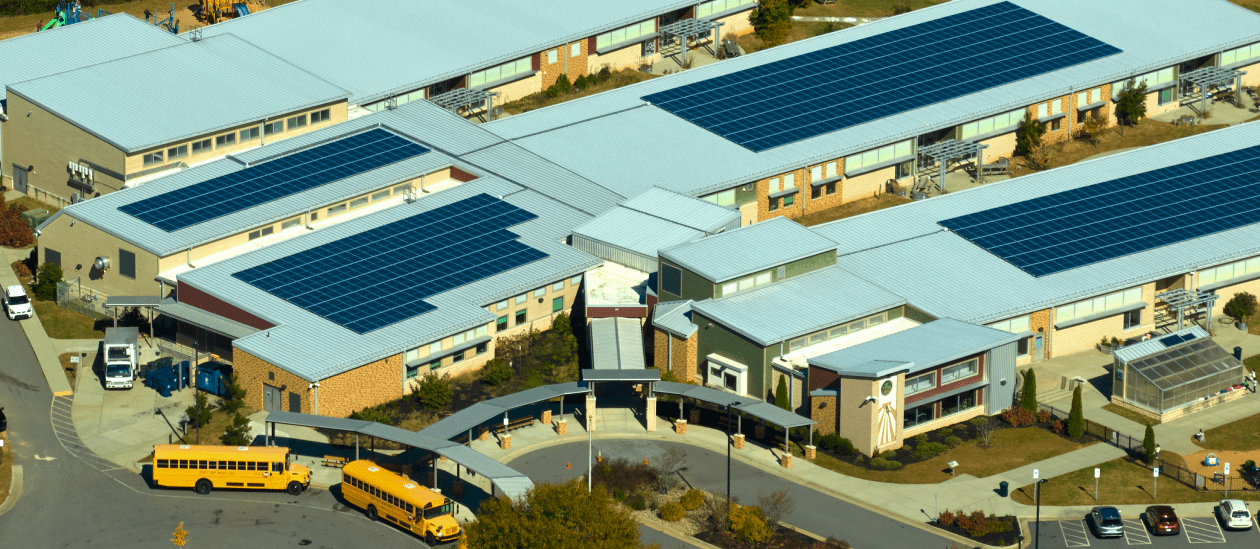
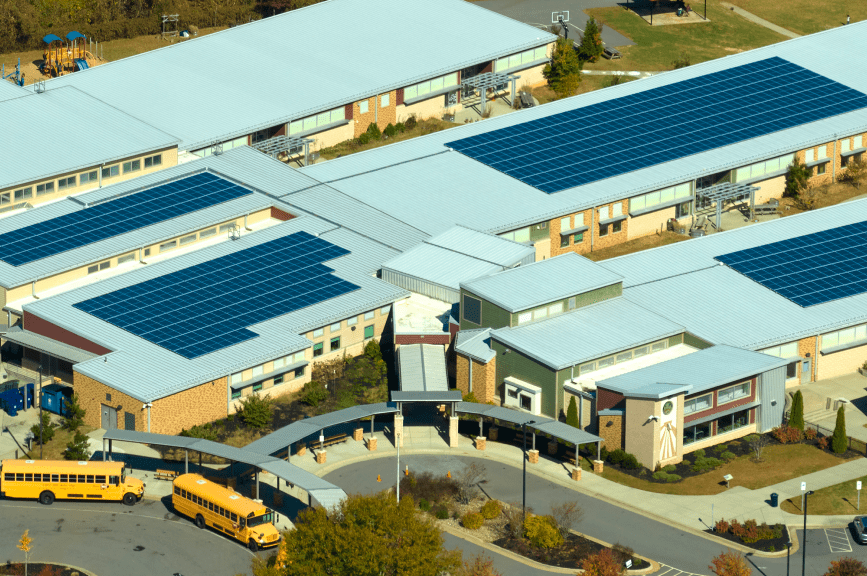
If you're reading this, chances are you’re exploring how to get solar panels for your school.
If it's a public school, you likely know the process isn’t simple, and may involve stakeholders ranging from teachers, staff and administrators to parents, students and community members.
If it’s a private school, there’s less red tape to go through, but you may still have some work to do walking decision makers through the benefits of installing solar.
The good news is that more than 8,400 K-12 public schools, approximately 9% nationwide, have already run the gamut to adopt solar — and yours can, too!
The benefits of solar panels for schools can be numerous, and include:
- Energy resilience
- Financial savings on electric bills
- Healthier families and communities
- Educational opportunities for students
Step 1 | Build Support & Select a Solar Company
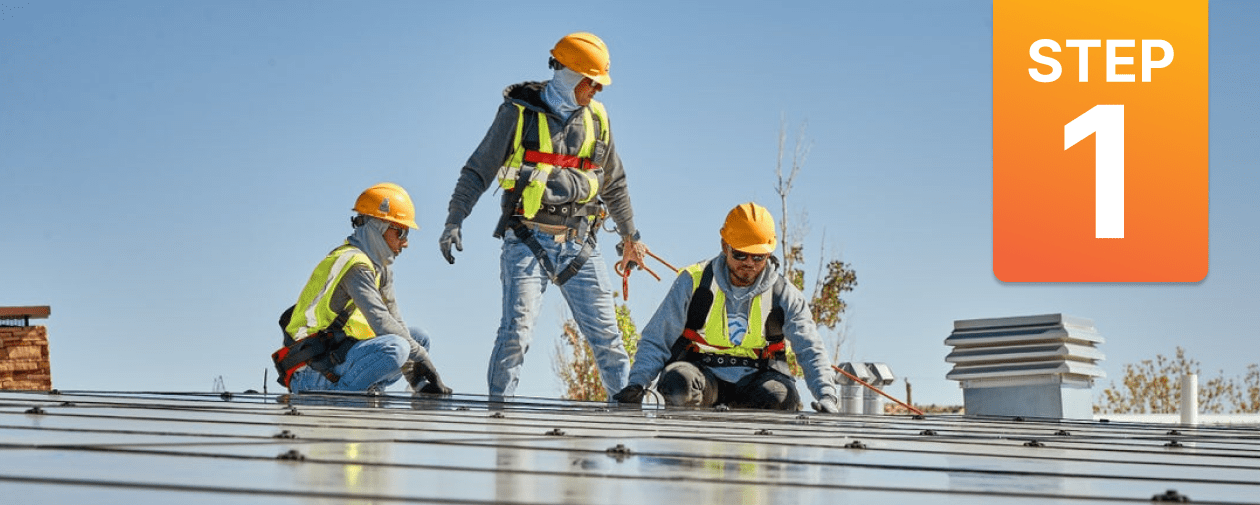
Getting solar panels on your school is no solo mission — it begins by rallying the right team of stakeholders who can each bring unique perspectives and expertise to the table.
You can start by identifying teachers, students, parents, school board and community members who share your vision for a greener, more sustainable future. They can help bolster support by spreading the word throughout your school and district. Engaging students, specifically, can help create authentic learning and leadership opportunities.
It’s also wise to engage with the school’s facilities manager and a solar company with relevant school experience who can provide insights into the operational and logistical aspects of installing the panels. And it never hurts to reach out to nearby schools or districts that have already adopted solar and invite them to share their experience with decision makers.
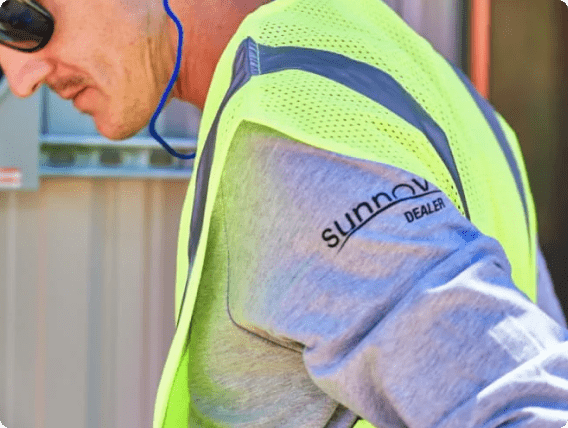
Once you have your support in place, the next step is to find an experienced and trusted installer. Here, it’s vital to establish criteria for evaluating the best commercial solar company for your school. These can include:
- Knowledge & experience
- Financial stability & capacity
- Operations & maintenance plan
- Customer satisfaction & references
- Financial return and cost-effectiveness
- Project leadership & regulatory expertise
After the solar developer is selected, it’s time to get into the thick of things.
Step 2 | Understand Your School's Electricity Usage
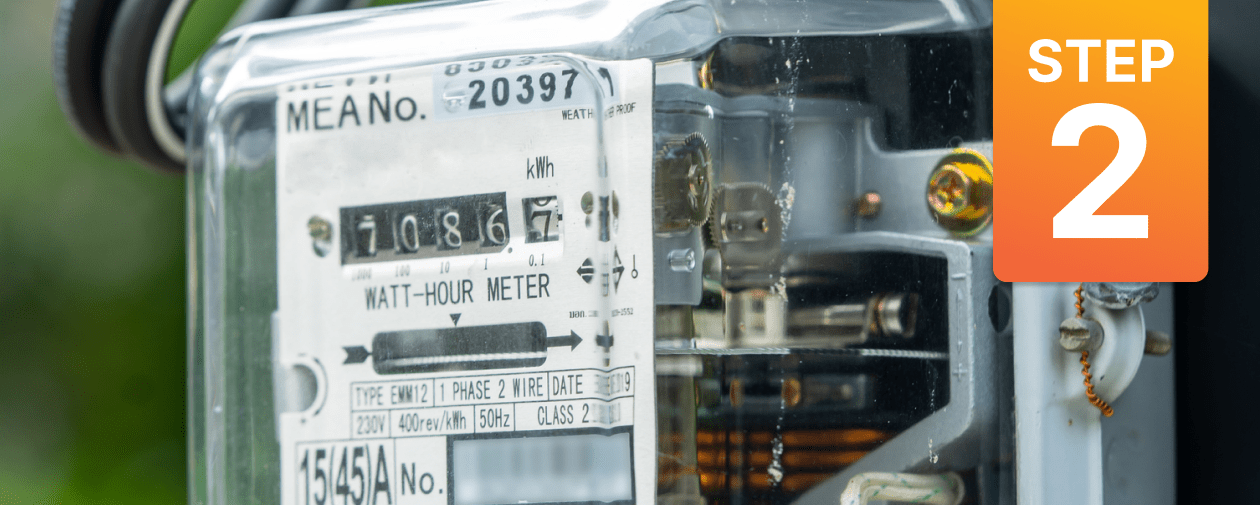
Now, it’s time to understand your school’s energy landscape. This involves a deep dive into its electricity consumption patterns, utility costs over the past year and future energy requirements. Armed with this data, you’ll be better equipped to determine the optimal solar system size, equipment, and potential cost savings.
This is where working with a commercial solar company like Sunnova comes into play — we can work with your facilities staff to conduct a thorough review of your electric utility bills. This will establish a baseline for current energy usage and associated costs.
Our team will also consider how your school’s electricity needs may evolve in the coming year — maybe you’re planning to install EV charging stations or add an after-school program that requires longer, more intense electrical usage. We factor in these future load increases when assessing your solar requirements.
We also examine any demand charges or additional utility fees. A well-designed solar system can help mitigate these charges, particularly if your peak consumption aligns with the system’s maximum production hours.
To further optimize your solar investment, we can also explore the potential integration of battery storage. By storing excess solar energy during peak production times, you can discharge that power during periods of high demand — effectively reducing your reliance on the grid and further minimizing demand charges.
Step 3 | Estimate Your School’s Solar Potential
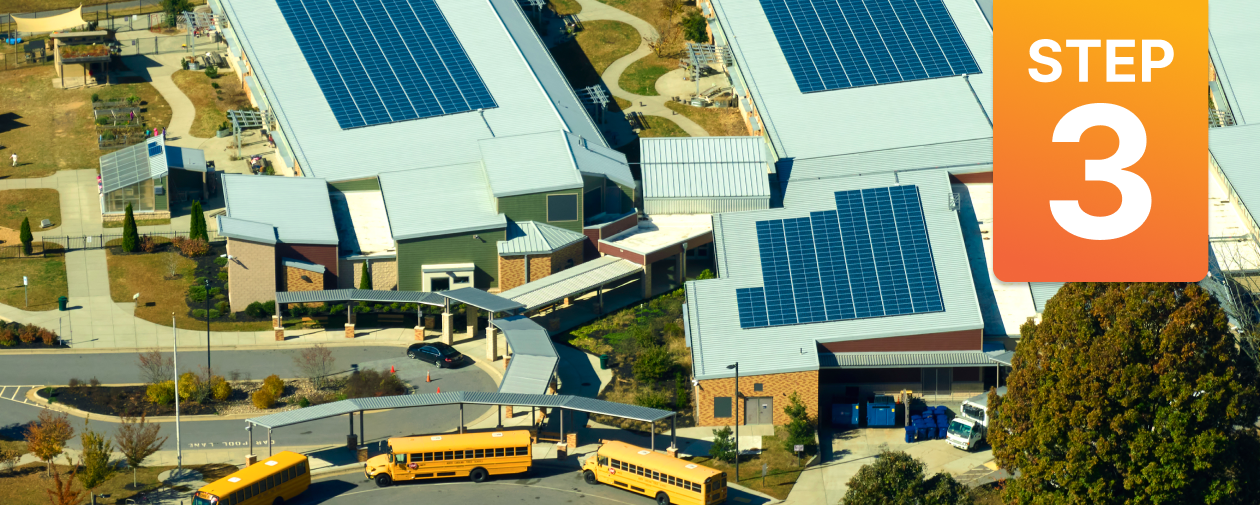
Once you understand the level of electricity your school uses and needs, you’ll then need an estimate of the size and scope of your solar panel project.
When Sunnova works on solar panels for schools, we do this by starting with a comprehensive inventory of all available spaces — including rooftops (the most common site), parking lots for shade structures and open areas suitable for ground-mounted systems.
For rooftop solar systems, we consider the condition and age of the roof itself. Solar panels are designed for long-term performance — Sunnova, for example, protects systems for up to 25 years. As such, it’s optimal to install panels on roofs that are less than a decade old, or those already scheduled for replacement.
But don’t limit your assessment to rooftops alone. Parking lots and other paved areas present great opportunities for solar shade structures, seamlessly integrating renewable energy generation with practical functionality.
An open space or unused field can also be transformed into a ground-mounted system, harnessing the sun’s power while providing an educational opportunity for students to witness sustainable energy production firsthand.
While a thorough site evaluation is vital, don’t let the complexity of the task deter you. A site assessment from Sunnova evaluates site characteristics for panel orientation, shading analysis, interconnection feasibility, regulatory compliance and more to ensure your installation is optimized for maximum efficiency and ROI.
Step 4 | Compare Financing Options

Once your school or district has a clear understanding of its solar potential, the next hurdle is securing the necessary financing to bring your system to life. While the cost of solar has plummeted in recent years, these systems still represent a significant investment that often requires creative financing solutions.

Power Purchase Agreement
A popular option for schools with solar panels is to pursue third-party ownership models such as power purchase agreements (PPAs). Under this arrangement, a solar company like Sunnova finances, constructs, owns and maintains the system on your school’s property. In exchange, the school agrees to purchase the solar power generated at a predetermined rate, typically much lower than traditional utility rates.
The beauty of a solar PPA for schools lies in their ability to mitigate upfront capital expenses. With Sunnova shouldering the installation costs, you can immediately begin reaping the benefits of clean energy without a significant initial investment.
Additionally, as the system owner, Sunnova can take advantage of federal tax incentives like the Solar Investment Tax Credit, which public, and some private, schools cannot directly utilize due to their tax-exempt status. These savings are often reflected in more competitive rate offerings.
A PPA can span up to 25 years, with the option to purchase the system outright at predetermined points or upon contract expiration. This flexibility allows your school to transition to full ownership once the financial landscape is more favorable, potentially maximizing long-term cost savings even further.
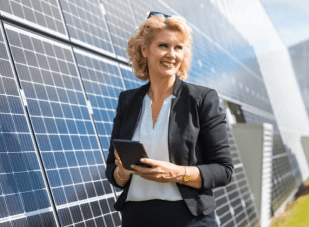
Direct Ownership
While the solar PPA model offers an appealing path to solar adoption, many schools opt for direct ownership through cash or loan options — affording greater control and potentially higher ROI. Direct ownership often generates the highest ROI, especially if your state has favorable public incentives and financing options.
Whichever financing structure you opt for, Sunnova can customize an energy plan that’s right for your school.
Step 5 | Identify Regulatory Hurdles

While the benefits of solar for schools are clear, the path to implementation can sometimes be obstructed by a maze of local, state and utility regulations. It’s important to anticipate and proactively address these potential hurdles to ensure a smooth installation and utility interconnection.
For the schools with whom we’ve done solar projects, the Sunnova team held the primary responsibility for ensuring compliance with state and local requirements, submitting the necessary paperwork and providing all pertinent documentation.
One area that often presents challenges for schools is local planning and zoning requirements. Permitting, inspection and interconnection processes can take time. However, some cities and counties have incorporated solar into their local zoning codes, streamlining and expediting the permitting process for installations.
Your utility may also provide some form of net metering, a financial credit for any excess energy exported to the grid. These credits can help offset the cost of grid electricity the school uses at night or other times when the solar system isn’t producing enough to meet the building’s full energy needs.
Step 6 | Solar System Installation & Ongoing Maintenance
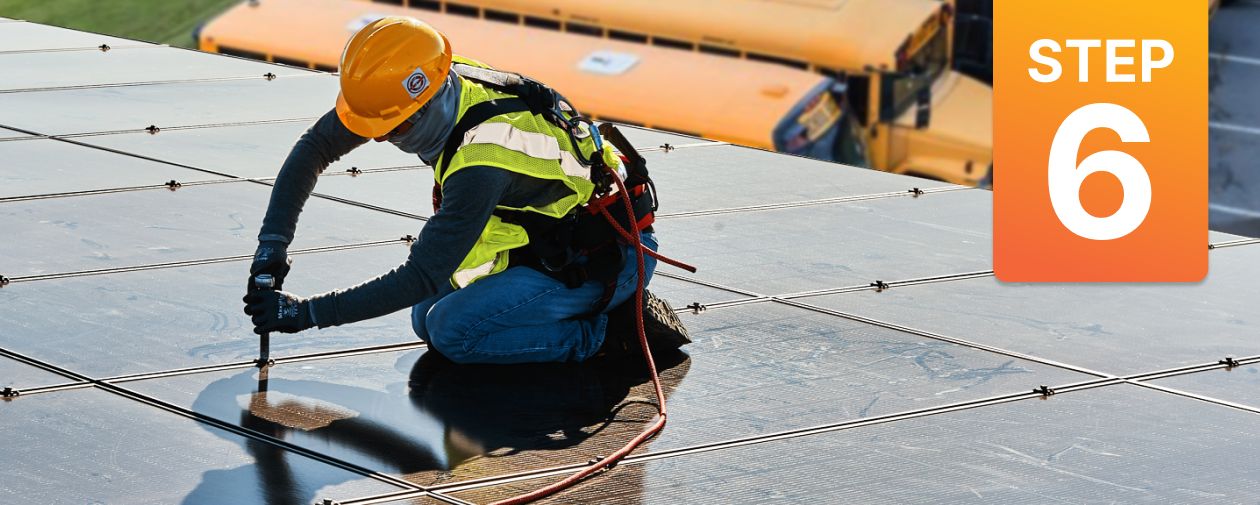
Once work begins, it’s ideal to dedicate resources to monitor the construction and installation process. Sunnova, for example, maintains regular communication with school leaders throughout every phase to ensure smooth execution and address any potential issues promptly.
Major project milestones to maintain progress checks on include:
- Financing
- Grid interconnection
- Equipment procurement
- Securing regulatory approvals
- System testing and commissioning
- Community relations and communications efforts

For particularly large projects involving multiple school buildings or campuses, consider retaining and specialized consultant to provide expert oversight and project management services.
After the solar installation is completed and operational, ongoing monitoring and maintenance become critical to ensuring the system operates at peak efficiency for decades to come.
Schools often work with the solar company to provide these long-term services — Sunnova, for example, provides ongoing maintenance, monitoring and repair for commercial solar and battery systems for up to 25 years.
Want solar for your school?

